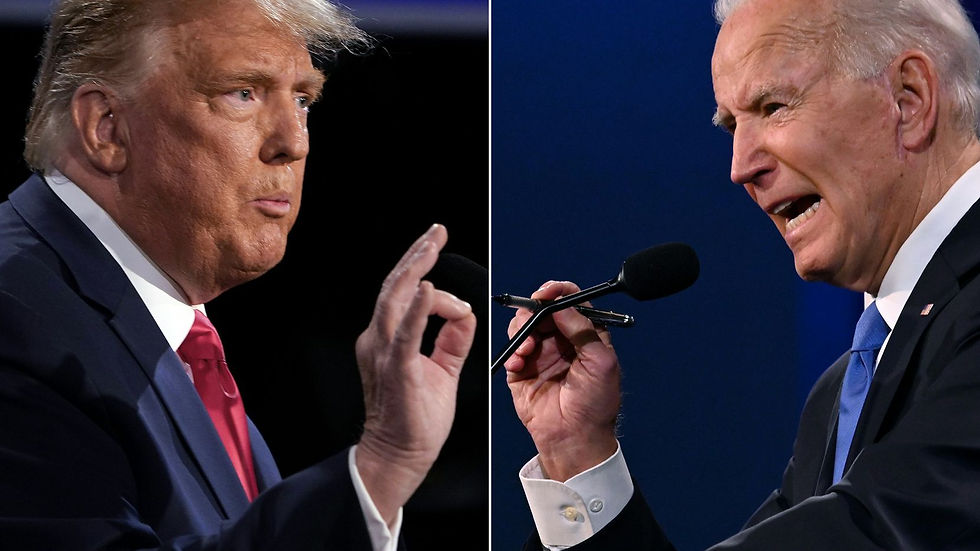It's Time to Re-Evaluate Our 2-Deminsional Stereotypes About Voting.
- charlottenoeljones
- Aug 24, 2021
- 4 min read
Updated: Sep 30, 2021

Voting is perhaps one of the most fascinating parts of politics. Voting is one of the few things that gives the people a voice in politics and one of the best avenues for political progress. Also, voting is very complex and there are many characteristics that influence who votes for who. Moreover, voting is important because it helps political scientists gather data and research on demographics. Something difficult about studying voting is keeping intersectionality in mind. Intersectionality is factors like race, gender, age, etc. influencing one another and complicating decisions. For example, a women may be expected to vote a certain way because she is a women, but now what if she is high-income, Latino, catholic, and bisexual? How do these characteristics affect her vote?

One interesting thing to study is the gender gap, which refers to the differences in voting between men and women. Surprisingly, women didn't start voting in the same numbers as men until 1980 during the Regan vs Carter election. Although women fought hard for the right to vote, it took them 40 years since 1920 to start voting in significant numbers. Also, up until the Regan vs Carter election, women primarily voted the same as men, which was republican. However, in the 1980 election more than half of female voters voted democratic and that number has been rising ever since (Thomson-DeVeaux & Conroy, 2020). In 2019, 56% of female voters identified as democrat (compared to 50% of male voters who identified as democrat). Moreover, Black, White, and Latino female voters all were reported as voting more than men in 2016 (Igielnik, 2020). One reason for this is less voting barriers for women of color. For example, in 1970 literacy tests were banned nation wide. Also, women everywhere had more access to education about voting and politics, and the feminist movement in the 60s and 70s mobilized women to vote. Another reason for this is because in 1980 women were starting to get away from the 1950's housewife role and become more independent. And in the past 40 years women have actually become the dominant voters being 4% more likely to vote in 2016 (Igielnik, 2020).
Another factor in voting is class. Unsurprisingly, low income voters almost always vote democratic regardless of race. One of the reasons is the debate about taxes. People of any race want low taxes if they are rich, and people of any race want to see rich people taxed if they are poor. Moreover, low income people favor more spending on welfare, public schools, and social security which are all apart to the democratic party platform (McElwee et al., 2016). Something that may be related to the polarization in the United States is the shrinking middle class. Typically, middle class people are the ones identifying as independent, but as that class is disappearing the public is becoming more political.
Another factor is religion. In the 2018 midterms, Republican supported dropped among Protestant Christian, Catholic, Jewish, Atheist, and Evangelical Christian voters. However, Evangelicals and Protestants still remained strongly republicans. The highest percentage of democrats came from Jewish and Atheist voters (Sciupac & Smith, 2018). One reason evangelical support may have been so high during Trump's presidency is because more republicans started identifying as evangelical Christians during this time (Smith, 2021).


Another factor in voting is sexual orientation. There isn't a lot of information on LGBTQ people because many people haven't started coming out until recently. Also, only 5% of registered voters identify as LGBTQ so opportunities for surveys and polling are limited. Although most LGBTQ members are liberal, 25% are conservatives (Haider-Markel et. al. 2017). On average, LGBTQ members are usually more liberal than the average population and care more about issues like the environment and immigration. Moreover, in 2016, around 89% of LGBTQ voters disapproved for former president Trump (Kiley & Maniam, 2016).
All these factors, plus many more, make voting complex yet interesting to look at. Moreover, it makes voting trends a little more unpredictable because there are many things to consider. It is interesting to see how voting has changed over time as well as what voting trends and habits will look like in the future.
Citations
Thomson-DeVeaux, A., & Conroy, M. (2020, August 19). Women won the right to vote 100 years ago. They didn’t start voting differently from men until 1980. FiveThirtyEight. https://fivethirtyeight.com/features/women-won-the-right-to-vote-100-years-ago-they-didnt-start-voting-differently-from-men-until-1980/
Igielnik, R. (2020, August 18). Men and women in the U.S. continue to differ in voter turnout rate, party identification. Pew Research Center. https://www.pewresearch.org/fact-tank/2020/08/18/men-and-women-in-the-u-s-continue-to-differ-in-voter-turnout-rate-party-identification/
McElwee, S., Rhodes, J., & Schaffner, B. F. (2016, October 12). Is America more spanided by race or class? The Washington Post. https://www.washingtonpost.com/news/monkey-cage/wp/2016/10/12/how-do-race-ethnicity-and-class-shape-american-political-attitudes-heres-our-data/
Sciupac, E. P., & Smith, G. A. (2018, November 7). How religious groups voted in the midterm elections. Pew Research Center. https://www.pewresearch.org/fact-tank/2018/11/07/how-religious-groups-voted-in-the-midterm-elections/
Smith, G. A. (2021, September 15). More White Americans adopted than shed evangelical label during Trump presidency, especially his supporters. Pew Research Center. https://www.pewresearch.org/fact-tank/2021/09/15/more-white-americans-adopted-than-shed-evangelical-label-during-trump-presidency-especially-his-supporters/
Kiley, J., & Maniam, S. (2016, October 25). Lesbian, gay and bisexual voters remain a solidly Democratic bloc. Pew Research Center. https://www.pewresearch.org/fact-tank/2016/10/25/lesbian-gay-and-bisexual-voters-remain-a-solidly-democratic-bloc/



Comments